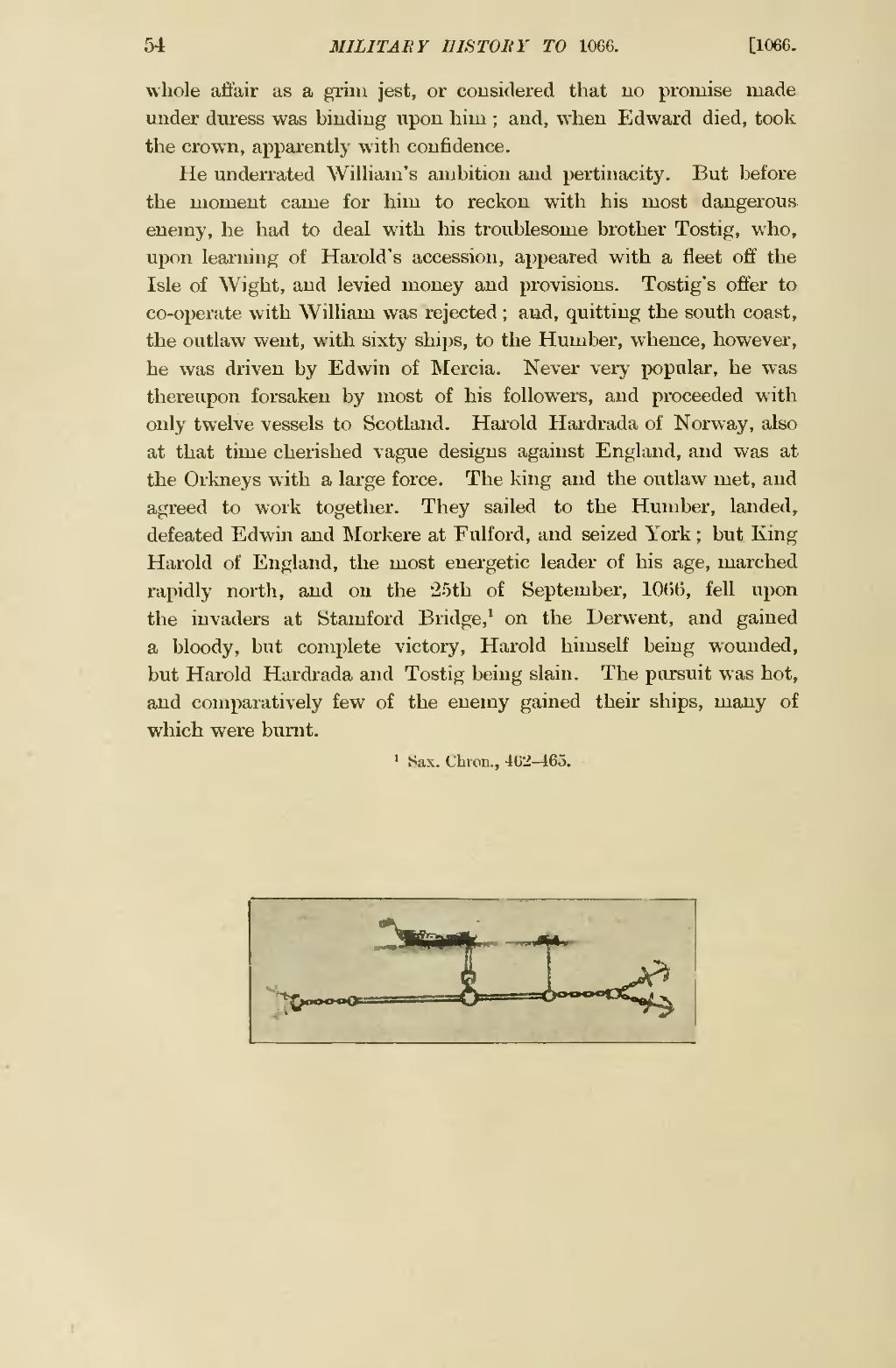whole affair as grim jest, or considered that no promise made under duress was binding upon him; and, when Edward died, took the crown, apparently with confidence.
He underrated William's ambition and pertinacity. But before the moment came for him to reckon with his most dangerous enemy, he had to deal with his troublesome brother Tostig, who, upon learning of Harold's accession, appeared with fleet off the Isle of Wight, and levied money and provisions. Tostig's offer to co-operate with William was rejected; and, quitting the south coast, the outlaw went, with sixty ships, to the Humber, whence, however, he was driven by Edwin of Mercia. Never very popular, he was thereupon forsaken by most of his followers, and proceeded with only twelve vessels to Scotland. Harold Hardrada of Norway, also at that time cherished vague designs against England, and was at the Orkneys with a large force. The king and the outlaw met, and agreed to work together. They sailed to the Humber, landed, defeated Edwin and Morkere at Fulford, and seized York; but King Harold of England, the most energetic leader of his age, marched rapidly north, and on the 25th of September, 1066, fell upon the invaders at Stamford Bridge,[1] on the Derwent, and gained bloody, but concrete victory, Harold himself being wounded, but Harold Hardrada and Tostig being slain. The pursuit was hot, and comparatively few of the enemy gained their ships, many of which were burnt.

- ↑ Sax. Chron., 462-465.
